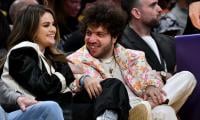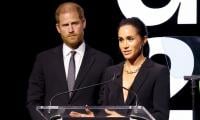In the first part of this series, we discussed how ‘Jang’, founded by Mir Khalil-ur-Rahman established itself as the foremost Urdu newspaper in the country.
In this second and last part, we continue to highlight the literary services rendered by ‘Jang’ as researched by Dr Qamar Abbas and presented in his doctoral thesis that has been published in the book ‘Raznama Jang ki Adabi Khidmaat’. As discussed earlier, one of the earliest literary controversies after Independence emerged when the Progressive Writers Association (PWA) became active, and the conservative lot launched a tirade against it.
Since ‘Jang’ was presenting both points of view, it became a favourite newspaper of readers who wanted a middle path between the left-wing ‘Imroze’ and the right-wing ‘Nawa-e-Waqt’. When the PWA was banned, initially ‘Jang’ welcomed the ban but then changed its policy and advocated tolerance of the difference in opinion. Another interesting literary dispute emerged when Qurratulain Hyder published her novel ‘Aag ka Darya’ (The River of Fire). Dr Qamar Abbas informs us that this controversy was well covered in the pages of Jang, and both sides were given space to voice their points of view.
Similarly, we also get to know about the details of the court cases against Saadat Hasan Manto, who was accused of promoting obscenity through his short stories. Another very informative section is about Mirza Yaas Yagana Changezi and how in Lucknow he was humiliated and paraded with his face blackened by charcoal. The controversy started when some of Yagana’s personal notes were used against him by Maulana Abdul Maajid Daryabadi. The youth of Lucknow were incited against Yagana, he was beaten up severely, forced to sit on a donkey and paraded in the streets of Lucknow.
This is a black chapter in the history of Urdu literature, when an excellent and elderly poet became the target of an ignorant mob who at the incitement of religious leaders became violent and targeted a septuagenarian man. This episode reminds one of the treatment meted out to scholars such as Ibne Rushd and Ibne Sina almost a thousand years back. Another piece worth reading is the obituary note at the death of Saadat Hasan Manto. ‘Jang’ covered his life and death by publishing a non-traditional obituary in which some fundamental questions were raised.
Since the promotion of literature was a prime concern of ‘Jang’, it started serializing ‘Fasana-e-Ajaeb’ with illustrations. It became an instant hit and the readers’ response was very encouraging, prompting the paper to keep its serialisation going with other literary pieces also. Even this writer remembers waiting every day, as a child in the 1970s, for the next episode of Tarzan and Phantom’s serialisation. These serials encouraged children to read and also taught them new words. One wonders what happened to that desire of newspaper editors to interact with children. Now most pages for children have stories and poems of a religious nature.
Jang’s literary contribution for children was not confined to serialisations. The children’s page, ‘Naunehal League’, introduced young writers who later became well-known journalists, poets and playwrights – such as Haseena Moen, Ghazi Salahuddin, Rasheeda Rizvia, Raza Ali Abidi, and Athar Shah Khan. The daily also started an exclusive page for the youth. Poets such as Naqqash Kazimi and Parveen Shakir first appeared in those pages of ‘Jang’.
That was the time when prose and poetry from writers such as Josh Malihabadi, Faiz Ahmed Faiz, Ehtisham Hussain, Shahid Ahmed Dehlavi, Abul Khair Kashfi, Syed Muhammad Taqi, Zehra Nigah, Hajra Masroor, Waheeda Naseem, Ismat Chughtai, and others regularly adorned the pages of ‘Jang’. For the promotion of regional literature, ‘Jang’ off and on published articles on personalities such as Bulleh Shah, Data Gunj Bukhsh, and Khawja Ghulam Fareed. Shafi Aqeel, who remained associated with the Jang Group for many decades, contributed greatly by translating folk tales and Sufi poetry of Punjab.
The second biggest coverage was given to the Sindhi literature with a special focus on poets and personalities such as Shah Abdul Latif Bhitai, Sachchal Sarmast, and Lal Shahbaz Qalandar. ‘Jang’ also launched an exclusive section titled ‘Mehran Rang’ that exclusively printed articles about Sindhi art, culture, and literature. Balochi and Pashto language and literature were not forgotten either but their coverage was not as wide as that given to Punjabi and Sindhi. Researchers and writers such as Dr Inamul Haq Kausar and Abdullah Jaan Jamal Dini for Balochi and Abid Shah Abid and Sahebzada Hameedullah for Pashto were featured multiple times.
Perhaps the most important literary contribution of ‘Jang’ was in the shape of interviews with literary personalities not only in Pakistan but also from India. Dr Qamar Abbas has made a careful selection of some of these interviews that are informative and interesting. For example, the names of Dr Gopi Chand Narang, Dr Muhammad Hasan, Kunwar Mahindra Singh Bedi, Dr Qamar Raees, Jagan Nath Azad, Majrooh Sultan Puri, Khumaar Bara Bankwi, Akhtar ul Iman, Ali Sardar Jafri, Mujtaba Hussain, Yousuf Nazim, Kaifi Azmi, Nida Fazli, Satya Paul Anand and Khalique Anjum come to mind.
‘Jang’ has also contributed to literary-cum-religious genres of naat and marsiya. Poets such as Hamayat Ali Shayar, Abdul Aziz Khalid, and Arsh Malsiayani, were regularly contributing on these topics. Another stock of writing consists of memories and obituaries of famous poets and writers, written either on their deaths or on their death anniversaries. We find detailed and gripping write-ups about Mustafa Zaidi, Hamid Hasan Qadri, Hafeez Hoshiyar Puri, Patras Bukhari, Qamar Jalalvi, Jameel Mazhari, Arzoo Lucknowi, Agha Shayar Qazalbash, Akbar Allahabadi, Ghulam Abbas, Saleem Ahmad, Ismat Chughtai, Aziz Hamid Madni, Professor Ahmad Ali, and Mehshar Badauni.
It is pertinent to remember that before 1978, ‘Jang’ included literary pieces of writing in its regular pages, and it was only in mid-1978 that an exclusive page was devoted to literature. An interesting discussion that appeared in the pages of ‘Jang’ and is included by Dr Abbas in his dissertation is about the scripts of the Bengali and Urdu languages. It is surprising to read that some of the promoters of Urdu propagated the idea that Urdu was the only language loved by all Muslims across India and Pakistan.
Regarding Bangla, it was suggested from the then capital of Pakistan, Karachi, that Bengalis living in East Bengal should start writing Bangla in ‘Quranic script’. One of the arguments presented was based on the assumption that Hindus hated Urdu because it was written in the ‘Quranic script’. It was further argued that after the adoption of Quranic script for Bangla by Bengalis, all Islamic countries would be joined in ‘one linguistic circle’. The selections made by Dr Qamar Abbas regarding this issue from the pages of ‘Jang’ are very informative and at times eye-opening.
In one article by Syed Muhammad Taqi and excerpted by Dr Abbas, it is argued that all languages of the world are divided into two groups based on the direction of script. In the first group are languages written from right to left and in the second group are those written from left to right. These and some other arguments were so ill-informed and ill-advised that you wonder how Urdu could be promoted with such rhetoric. To conclude this discussion on the literary contributions of ‘Jang’, one can only thank Dr Qamar Abbas for painstakingly going through all the pages of the newspaper that appeared over six decades.
One hopes that Dr Abbas will continue his research and writing to illuminate us about literary issues and personalities. A collection of his sketches appearing in ‘Jang’ is in order.
Concluded
The writer holds a PhD from the
University of Birmingham, UK and works in Islamabad.
Email: mnazir1964@yahoo.co.uk















